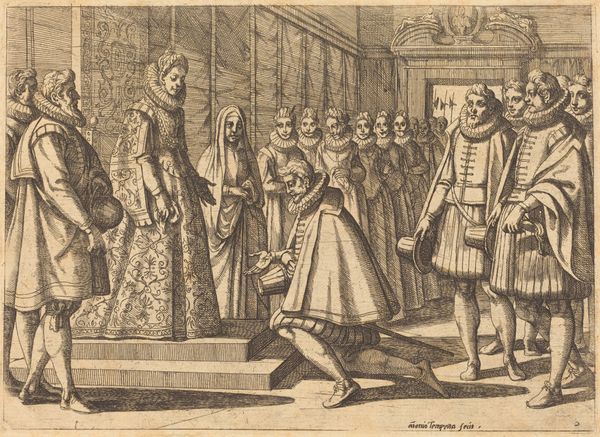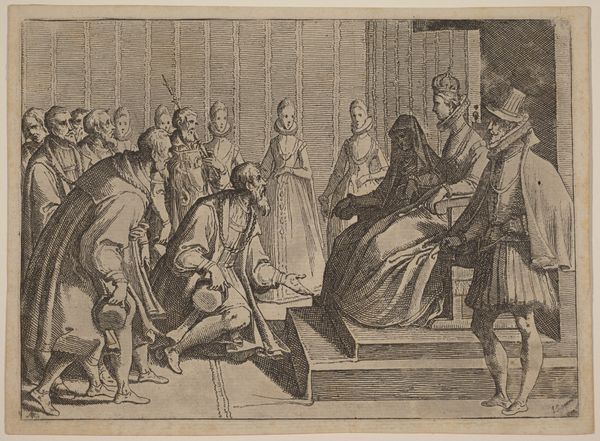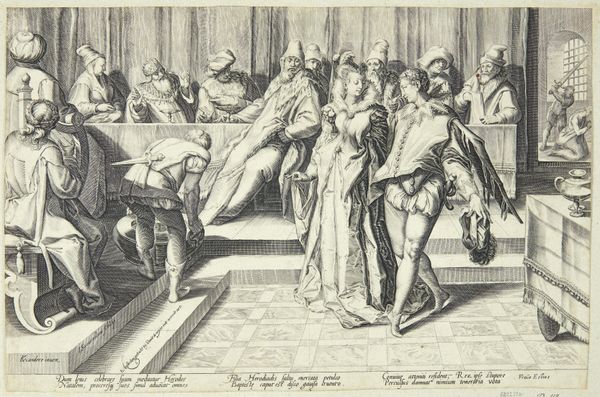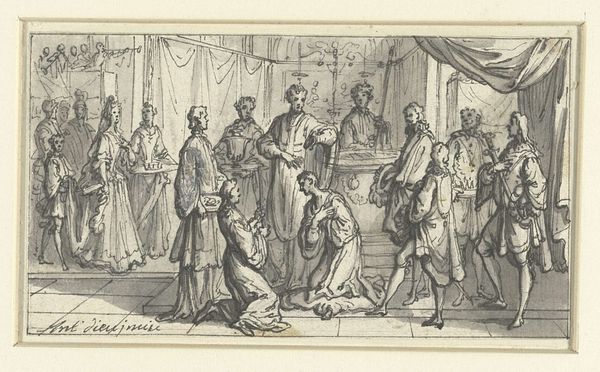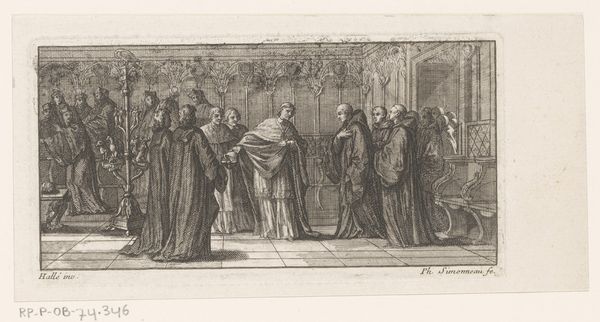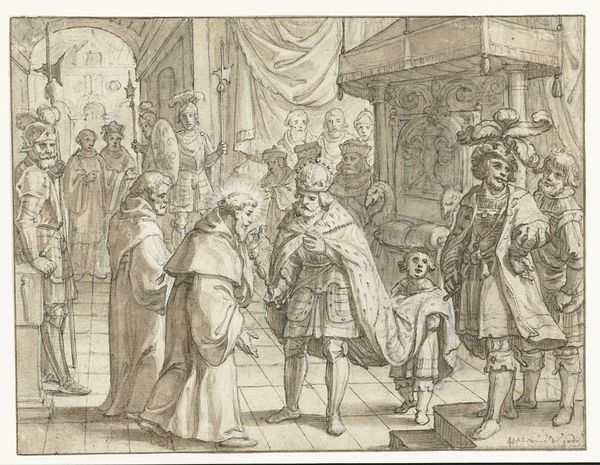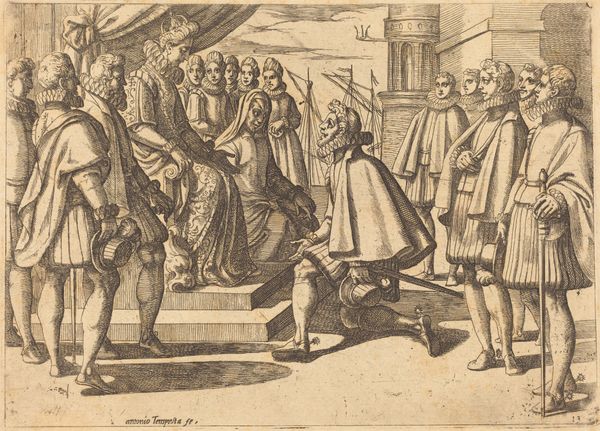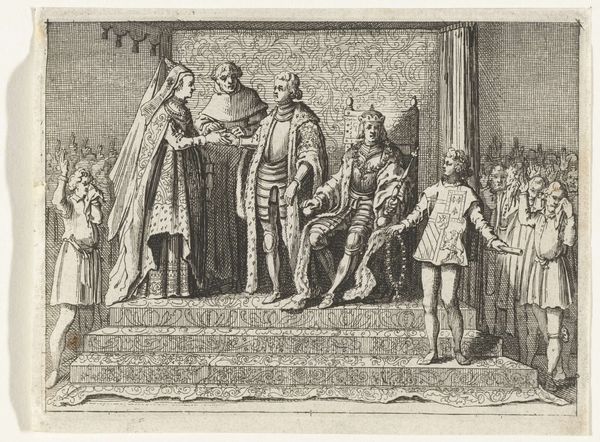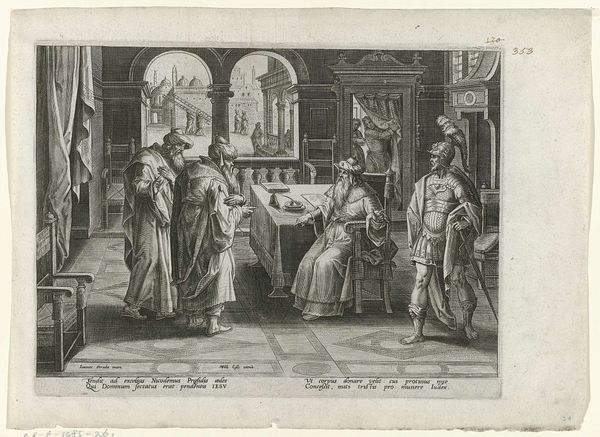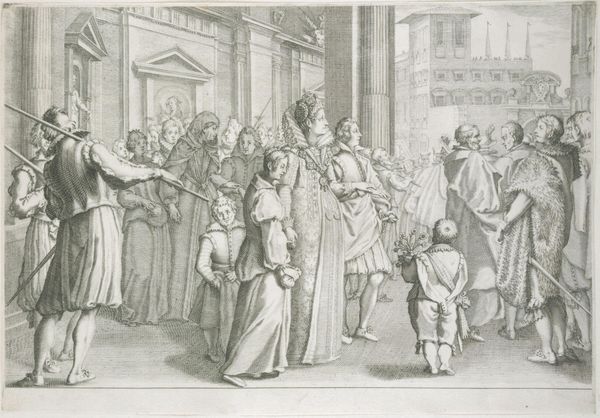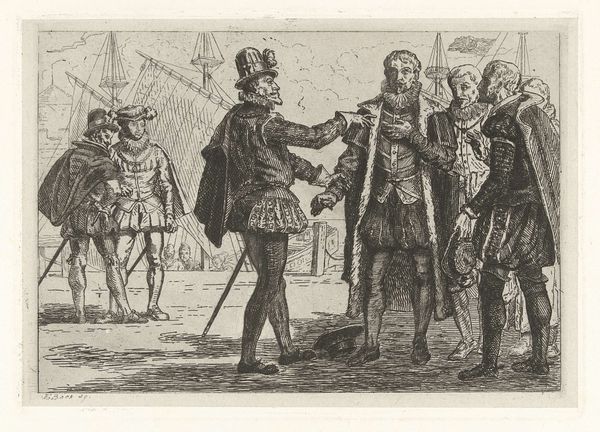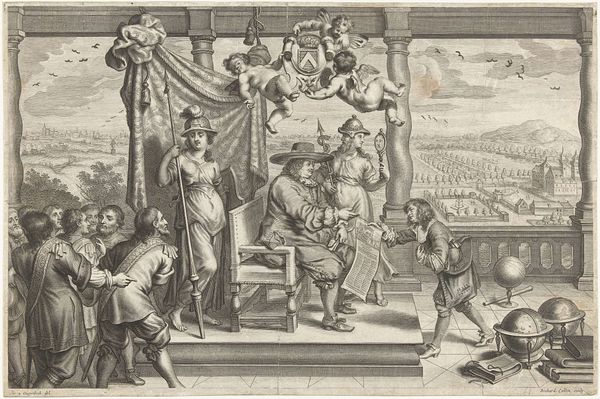
Dimensions: 21 x 30 cm (8 1/4 x 11 13/16 in.)
Copyright: CC0 1.0
Curator: Jacques Callot's "Marriage of Ferdinando I" presents a scene of calculated political alliance, etched with incredible detail. I am struck by the somber mood, despite the occasion. The lack of overt celebration feels telling. Editor: Callot’s engraving provides insight into the construction of power through dynastic marriage. Consider the role of women here: pawns in a game of patriarchal inheritance. Curator: Absolutely. The bride's gaze is averted, almost submissive. It speaks volumes about agency, or the lack thereof, in these unions. But what about the ceremony itself? Editor: The ritual underscores the Church’s role in legitimizing political power. Look at the bishop, a clear representation of institutional endorsement. Curator: And the surrounding figures, all symbols of status. It’s a performance of power, meticulously staged and then memorialized by Callot. This small print becomes a document of its time. Editor: Indeed. Examining the broader context reveals how such images reinforced societal hierarchies. It makes one consider the unseen participants, the dispossessed, and the narratives intentionally excluded from this polished portrayal. Curator: It's a poignant reminder that art, even in its most celebratory guise, can be a powerful tool for both perpetuating and questioning the status quo. Editor: Precisely. Callot’s work allows us to reflect on the complex intersections of gender, power, and historical representation.
Comments
No comments
Be the first to comment and join the conversation on the ultimate creative platform.
